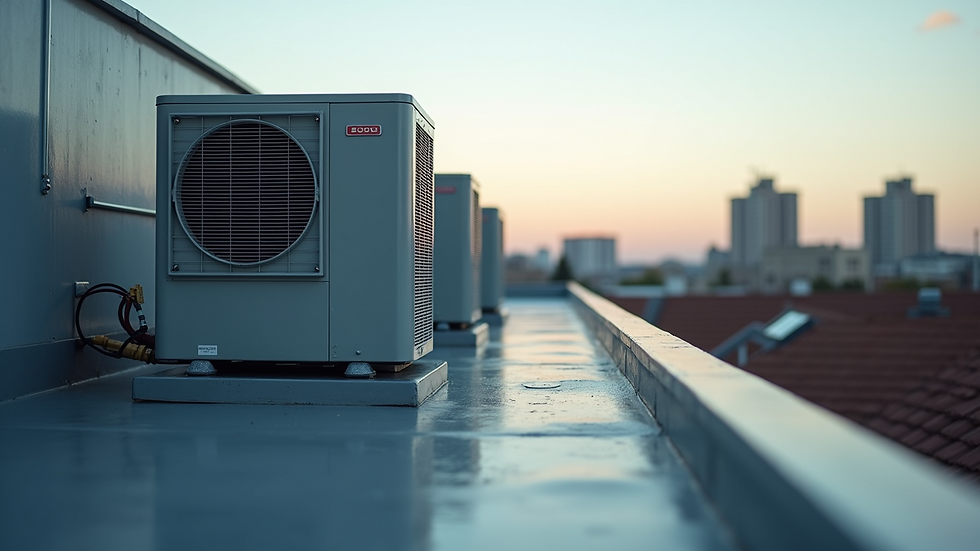What Every Homeowner Should Be Aware of Regarding HVAC Installation Mistakes
- Kirill Anikin
- Feb 18
- 3 min read
Installing a heating, ventilation, and air conditioning (HVAC) system can be tricky. It's important for homeowners to understand potential pitfalls in the installation process, as these mistakes can lead to costly repairs and discomfort. This blog post covers common HVAC installation errors and offers tips to help you avoid them.

Ignoring the Importance of Proper Furnace Installation
One frequent problem is when a newly installed furnace begins leaking. This issue can stem from improper sealing, misaligned parts, or poor workmanship. For instance, a study found that nearly 20% of new furnace installations are done incorrectly.
Proper installation ensures components fit together correctly, reducing the likelihood of air leaks or water accumulation. Homeowners should ask for references and check HVAC installers' qualifications to minimize these risks. Verifying their training can save you a lot of money in repairs and maintenance down the line.
Maintenance Neglect: The Dirty Flame Sensor
After just one to three years of use, many homeowners overlook a common yet crucial component: the flame sensor. This piece helps ensure the furnace operates safely and efficiently. Unfortunately, dust can build up on the sensor, leading to malfunctions.
Regular maintenance is essential. Scheduling checks annually or semi-annually will help keep the flame sensor and other components clean and functioning effectively. Taking this preventive step can extend your HVAC system's life by up to 25%, ensuring optimal performance over time.
The Dangers of Using the Wrong Tools
Using incorrect tools can lead to serious installation issues. For example, some installers may opt for a reciprocating saw to cut materials like PVC. However, this method can create small plastic shards that can clog drain systems or a secondary heat exchanger.
When water cannot drain properly, it risks system failures that could cost homeowners hundreds of dollars in repairs. Homeowners should ask what tools the installer will use to ensure they are suitable for the job and align with industry standards.
Neglecting Carbon Monoxide Detection
Failing to check for carbon monoxide (CO) during HVAC installation can pose serious hazards. This gas is both colorless and odorless, making it extremely dangerous.
Installers should routinely inspect areas near gas appliances for potential CO leaks. Homeowners can further protect their families by investing in reliable CO detectors and testing them quarterly. Regular inspections can cut the risk of carbon monoxide poisoning, which resulted in 430 deaths in the U.S. in a single year.
Inadequate Ductwork Design and Installation
A well-functioning HVAC system relies on properly designed and installed ductwork. Poor duct design can lead to uneven airflow, uncomfortable temperatures, and increased energy costs.
Homeowners should ask for detailed duct design plans to ensure their system is properly sized. Insulating and sealing ductwork can prevent air leaks, which studies suggest can improve efficiency by as much as 30%. Investing in well-designed ductwork will help avoid higher utility bills in the future.
Poor System Sizing
Incorrect system sizing is another widespread issue during HVAC installation. An oversized system can cool or heat too quickly without dehumidifying the air, while an undersized system will struggle to maintain comfortable temperatures.
Homeowners should ensure that installers perform a Manual J load calculation to evaluate factors like square footage and insulation. This important step helps determine the right unit size, which can enhance comfort and efficiency for years to come.
Lack of Documentation and Warranties
Receiving proper documentation after an HVAC installation is crucial for homeowners. Installers should provide warranties for both the equipment and workmanship. The absence of documentation can complicate any issues that arise later on.
Homeowners should inquire specifically about warranty details, including duration and coverage. Keeping track of this paperwork can be vital for future claims or disputes, preventing headaches in case problems emerge.
Final Thoughts
Understanding the common mistakes that can occur during HVAC installation is essential for homeowners. By being aware of proper installation practices, maintenance needs, and the importance of appropriate tools and documentation, you can protect your investment.
Being proactive about these issues not only saves you money but also enhances your comfort and peace of mind. Remember, knowledge about HVAC systems is your best tool for ensuring they work efficiently and reliably for years to come.



Comments